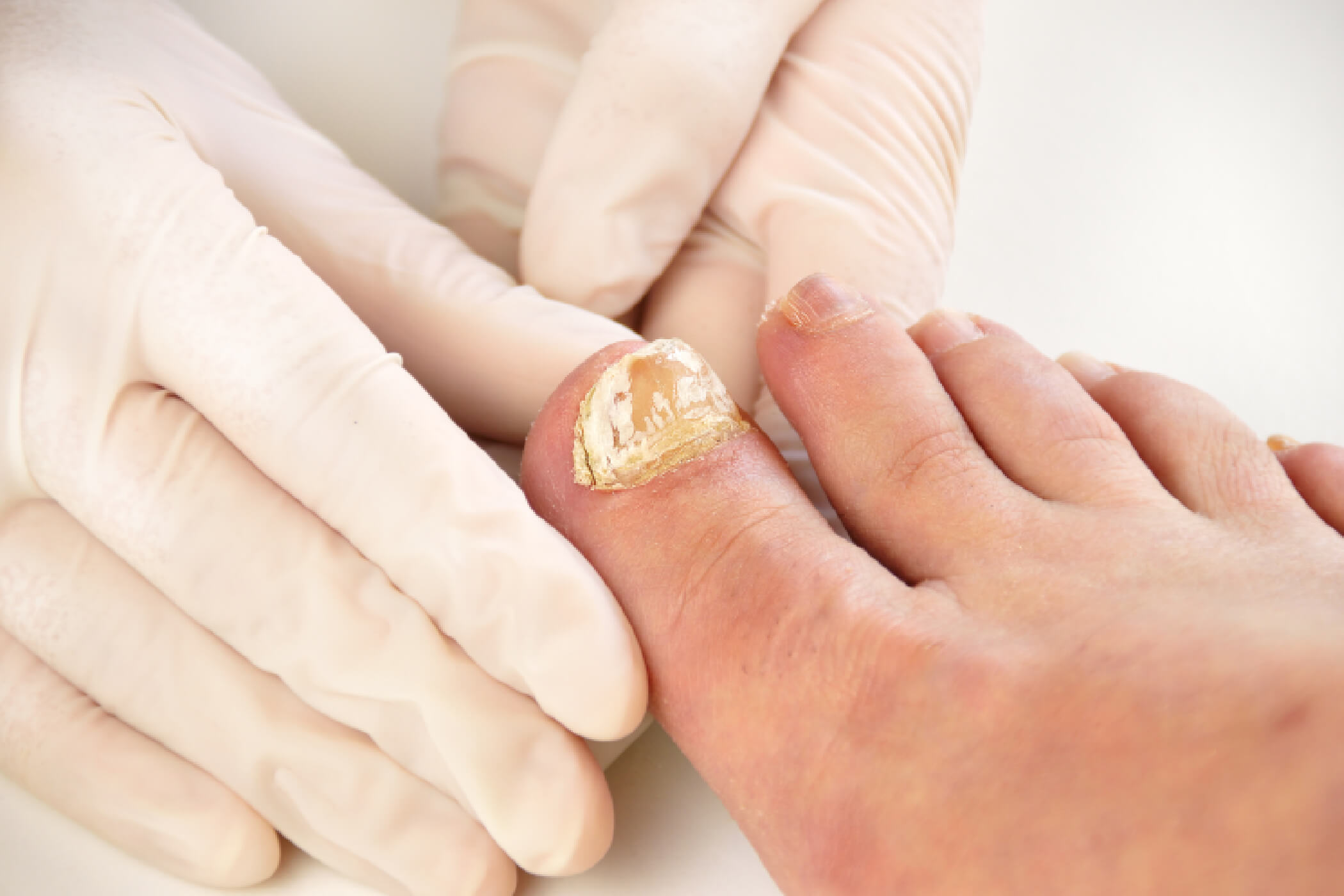Fungal nail infection, otherwise known as Onychomycosis, is a common issue that can affect one, some or all of your toe nails.
How do I know if I have a fungal nail?
At the start of a fungal infection, there are usually no symptoms. The nails can then become thick and painful when they press on the inside of a shoe, they can then be hard to trim. The nail can become uneven, raised and create pressure on the nail bed. Sometimes the infection invades the skin of the toe, which can cause local inflammation and pain.
The nail can also become discoloured, turning white or yellowish and become crumbly which can make you more self-conscious about your feet.
Fungal toenail infections can be caused by a number of different strains of fungus and yeasts. Medical conditions such as psoriasis, eczema, circulation problems and trauma to the nail can look like a fungal infection. It is important to correctly identify that there is an infection in the nail prior to treatment.
I think I have a fungal nail infection, what can I do?
Not all fungal nails need treatment, some patients with a fungal infection are not bothered by them and cause them no discomfort. In that case they can sometimes be left alone ( although patients should remain cautious to avoid spreading the infection to other parts of the body and nails). If the affected nails are uncomfortable or causing a concern then they are usually treated and this treatment is often carried out by a podiatrist.
Why do I have fungal in my toenails but not my finger nails?
Toenails are most commonly affected because the feet generally provide the environment needed for the fungi to breed and grow
How can fungal infections of the nails be treated?
The aim of the treatment is to get rid of the fungus, the nail will then usually return to normal. Treatment options include a topical based treatment or an oral based treatment. Topical based treatments, such as ones your podiatrist can give you are usually very successful in getting rids of the fungus. Topical treatment will take 3- 12months. This is because the infected and damaged nail does not heal, but instead needs to grow out. However, sometimes they may not be able to clear the deeper parts of an infected nail, though regular removal of abnormal nail material with clippers or filing can help with this. Your podiatrist can offer you further information in the management of your nails.
Will I need to have the infected nails removed?
Sometimes very thick nails that are not responding to treatments can be removed under local anaesthetic.
Will may nails look normal after treatment?
There is a possibility that your nails may not return to normal appearance after treatment. This is because of permanent damage to the nail cells may have occurred while the infection was present. The appearance of the nails can be enhanced with regular care of the nails once the infection is cured.


